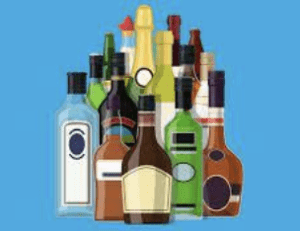Every case has its pros, and unfortunately, its cons. But one idea the best trial lawyers understand, and share, is that almost any negative can be turned to a positive.
Take alcohol for instance. Alcohol often plays a damaging role in the outcome of a trial. Attorneys can try and prevent the jury from hearing such issues through motions in limine, or they will get ahead of it, and reduce the negative effects of hearing alcohol related testimony using proper voir dire questions. However, a shrewd advocate can use potentially harmful, but still admissible, evidence to their advantage. 
For example, take the case of a police officer accused of excessive force in a wrongful death action. The officer claims the decedent smelled of alcohol and physically attacked him, forcing the officer to defend himself by striking the man, who fell to the ground, hit his head on the pavement, and suffered a traumatic brain injury.
Within hours of the altercation, police enter the injured man’s room and draw his blood, without a court order or consent. The results indicate a high level of intoxication.
At the civil trial, the police department defends itself by seeking to introduce the results of the toxicology test and argue the decedent was an “enraged drunk” who attacked the officer.
At first blush, this evidence seems damaging to the plaintiff’s case. However, after losing a motion to preclude, a skilled plaintiff’s attorney can, and did in this instance, use the evidence to their advantage. They did so by first arguing the police department acted immorally and unscrupulously; they entered the hospital room of an unconscious man, who was handcuffed to his bed and bleeding from his brain, and drew his blood without authorization and without the hospital’s assistance.
The attorney went on to argue that if the tests were accurate (which no one could really know because an impartial medical specialist such as the hospital had not drawn and tested the blood) then why was it necessary to use such force on an intoxicated man? Couldn’t the officer have easily subdued him if he was so drunk?
By doing so, this attorney tapped into both the emotion of the jury, by eliciting their anger, and their common sense by using logic, to change the narrative. The attorney turned a negative piece of evidence into one that fit their theory of the case – a corrupt and abusive police department that used unnecessary force on an incapacitated man.
Contrast that attorney with a different attorney’s failed approach to alcoholic evidence. This set of facts involves another alleged use of excessive force by a member of a police department. Again, a toxicology test demonstrated an extremely high blood alcohol level of the plaintiff immediately following an altercation with police. On questioning during the direct examination by his attorney, the plaintiff testified he had drank 3-4 quarter filled dixie cups of hard alcohol. The plaintiff’s attorney brought in the same type of dixie cups to use as demonstrative evidence and put four dixie cups on the jury box and used a sharpie to indicate how much of the cup had been filled. The attorney thought he had neutralized a potentially harmful piece of evidence by illustrating the alcohol consumption was not as substantial as the defense alleged.
During his case in chief, the young defense attorney outwitted the plaintiff’s attorney by putting a toxicologist on the stand who testified not only to the amount of alcohol in the plaintiff’s system at the time of the incident, but to the fact that if the plaintiff had been drinking out of dixie cups, and if they were only filled to a quarter of the cup, then the plaintiff would have had to have drank from over 14 dixie cups in a one hour period.
 As the toxicologist was testifying to the number of dixie cups, the able defense attorney began placing the fourteen dixie cups on the ledge of the jury box, which grew to a number so high that the cups towered above the jury when stacked.
As the toxicologist was testifying to the number of dixie cups, the able defense attorney began placing the fourteen dixie cups on the ledge of the jury box, which grew to a number so high that the cups towered above the jury when stacked.
The lesson to be learned in dealing with damaging evidence is that it can often be turned to one’s advantage, if done in the correct manner. The above examples demonstrate both a right and wrong way to deal with such evidence.
Controlling the evidence will make or break your case. here is only so much one can do, and it’s the judge’s discretion to determine the admissibility of evidence. But while every case has its share of damaging evidence, you as the trial attorney can turn that negative into a positive if you embrace it and make it fit your narrative.


What a great read Professor Hatcliffe! Some of these lessons could be carried over to life, far beyond advocacy!